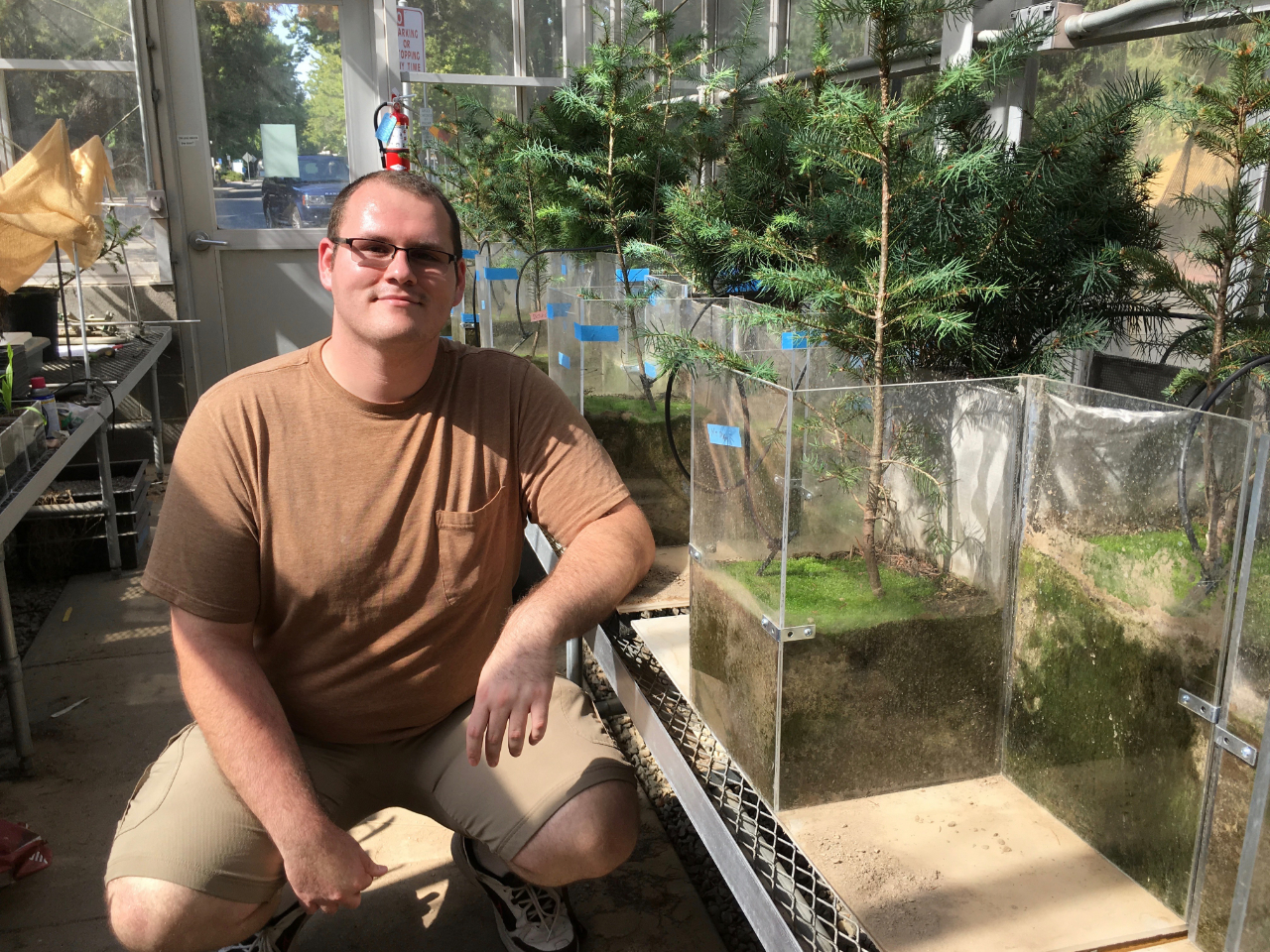
Graduate student Ian Mounts examines whether mycorrhizal networks can ameliorate plant drought stress
You may know that plants are colonized by mycorrhizal fungi in a symbiotic mutualism. But did you know that individual plants are connected to one another by networks of these fungi? And that plants can share nutrients, water, and even communicate through these networks?
Ian Mounts, a graduate student in my lab, is studying the role of common mycorrhizal networks. Ian is interested in whether mycorrhizal networks can ameliorate drought stress in plants – a particularly important stress in California plant communities.
His research will test the hypothesis that plants connected to a mycorrhizal network will experience lower drought stress than plants that are not connected to the network, and that they will have increased photosynthetic capacity.
To test his hypothesis, Ian established a set of experimental mesocosms in which Douglas fir seedlings are either connected to or not connected to a mycorrhizal network. After exposing the trees to simulated drought stress, Ian will measure water potential (an index of drought stress) and photosynthetic capacity (as stomatal conductance).
Ian’s study is currently underway. He also recently presented a poster of his proposed thesis research at Sacramento State’s annual Student Research Symposium.
If you’re curious and want to know more about mycorrhizal networks, read on.
A surprising and very cool biological fact is that virtually all plants are connected to one another below ground by fungi that colonize their roots. These fungi are known as mycorrhizal fungi. “Myco” means fungus, and “rhiza” means root. So mycorrhizae are essentially fungal roots. Or more accurately, plant roots colonized by a fungus.
Although many fungi are pathogens or decomposers living independently, mycorrhizal fungi are symbiotic mutualists and so are closely associated with plants. As a mutualism, both the fungus and the plant derive a benefit from the interaction. The plant host benefits by gaining increased access to nutrients and water, as well as other benefits such as pathogen resistance, that the fungus provides. In return, the fungus benefits by receiving carbon fixed in photosynthesis by the plant.
But their’s more to the story. It turns out that mycorrhizal fungi colonize multiple plants at the same time – even plants of different species! Consequently, the different plants in a plant community are actually connected to one another below ground in what are called mycorrhizal networks. In fact, many studies have demonstrated that through these networks plants share nutrients, water, and can even communicate!


